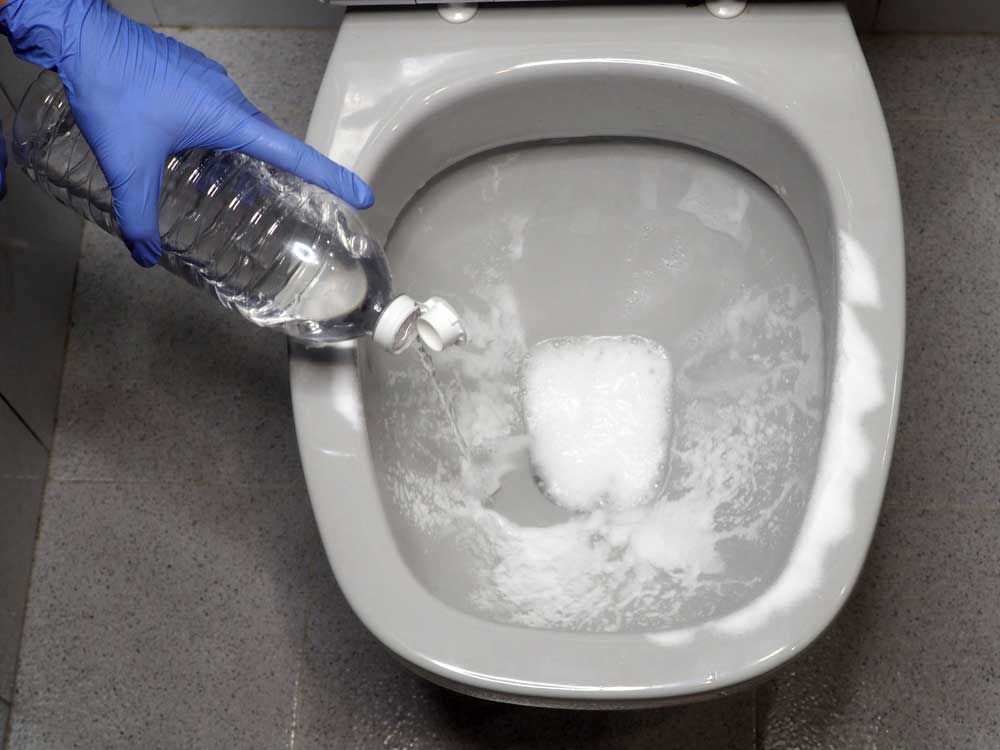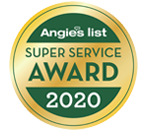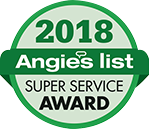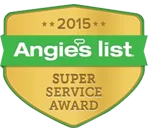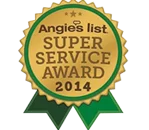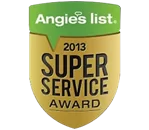A clogged toilet is a common household issue that can quickly escalate into a messy and inconvenient situation. While a plunger is the go-to tool for most, what happens if you find yourself without one? Don’t worry, as this comprehensive guide explores effective and unconventional methods to unclog toilets without a plunger.
From dish soap to wire hangers, we’ll cover various techniques, showing you how they work and when to use them. Additionally, we’ll discuss preventive measures and address frequently asked questions to equip you with the knowledge needed to tackle and avoid toilet clogs in the future. And of course, you can always contact FORD’S Plumbing and Heating for toilet clogs or other plumbing problems.
Table of Contents:
- Reasons Your Toilet Might Be Clogged
- Safety First
- Method 1: Dish Soap
- Method 2: Hot Water
- Method 3: Wire Hanger
- Method 4: Baking Soda and Vinegar
- Method 5: Plastic Bottle
- How to Prevent Toilet Clogs
- FAQs
- Contact a Professional Plumber to Unclog Your Toilet
Reasons Your Toilet Might Be Clogged
Understanding the root causes of toilet clogs is the first step to effective unclogging. Common reasons include:
1. Excessive Toilet Paper Usage
Using an excessive amount of toilet paper in one flush can lead to clogs, especially in older plumbing systems.
2. Foreign Objects
Items not meant to be flushed, such as sanitary products, cotton balls, or facial tissues, can cause blockages.
3. Hard Water Buildup
Mineral deposits from hard water can accumulate in the pipes, narrowing the passageway and causing clogs.
4. Tree Roots
In outdoor plumbing systems, tree roots can infiltrate pipes, leading to blockages.
5. Flushing Non-Flushable Items
Flushing items like baby wipes, diapers, or paper towels, even if labeled as “flushable,” can cause clogs.
Safety First
Before attempting any unclogging methods, make sure you have all of the necessary safety equipment.
1. Wear Protective Gear
Wear rubber gloves to protect your hands from potential contaminants.
2. Ensure Adequate Ventilation
If using chemicals, make sure the area is well-ventilated.
3. Use Caution with Boiling Water
Exercise caution when handling boiling water to prevent burns. Keep children and pets away from the work area.
Method 1: Dish Soap
How Dish Soap Works to Unclog Your Toilet
- Lubrication: Dish soap acts as a lubricant, reducing friction between the clog and the pipes.
- Breaking Down Matter: Dish soap helps break down organic matter, making it easier to flush away and remove the toilet clog.
Steps:
- Add Dish Soap: Squirt a generous amount of dish soap (about half a cup) into the clogged toilet bowl.
- Wait: Allow the soap to sit for 15-20 minutes, giving it time to penetrate the clog.
- Flush: Flush the toilet to see if the clog has cleared. If not, consider repeating the process.
Method 2: Hot Water
How Hot Water Works to Unclog Your Toilet
- Softening Matter: Hot water helps soften and break down toilet paper and organic matter.
- Increasing Pressure: The force of hot water creates additional pressure, aiding in dislodging the clog.
Steps:
- Heat Water: Heat a pot of water until it is hot but not boiling.
- Pour Water: Carefully pour the hot water into the toilet bowl from waist height.
- Wait and Flush: Wait for a few minutes, allowing the hot water to work. Flush the toilet to check for improvement.
Method 3: Wire Hanger
How a Wire Hanger Works to Unclog Your Toilet
- DIY Auger: A wire hanger can be fashioned into a makeshift auger.
- Dislodge the Clog: This DIY auger helps to physically break up and dislodge the clog.
Steps:
- Unwind Hanger: Unwind and straighten a wire coat hanger.
- Create a Hook: Create a small hook at the end of the wire to use as a grabbing tool.
- Insert and Twist: Insert the wire into the toilet drain and gently twist it to break up the clog.
- Flush: Flush the toilet to check for improvement. Repeat if necessary.
Method 4: Baking Soda and Vinegar
How Baking Soda and Vinegar Works to Unclog Your Toilet
This classic household duo creates a fizzy reaction that can help break down clogs and clear pipes.
Steps:
- Add Baking Soda: Pour about one cup of baking soda into the toilet bowl.
- Pour Vinegar: Follow the baking soda with one cup of vinegar.
- Wait: Allow the mixture to fizz for at least 30 minutes, breaking down the clog.
- Flush: Flush the toilet to see if the clog has cleared.
Method 5: Plastic Bottle – Hot Water Burst
How a Plastic Bottle Works to Unclog Your Toilet
Utilizing a plastic bottle for a targeted hot water burst is an effective method to dislodge stubborn toilet clogs. This approach combines the force of hot water with controlled pressure to break down and clear the obstruction.
Steps:
- Remove Water: Use a small plastic cup to remove as much water as possible from the toilet bowl.
- Fill with Hot Water: Fill a large plastic bottle with hot (but not boiling) water.
- Cover and Insert: Cover the bottle opening with your thumb, and position it nozzle first into the toilet drain.
- Press and Release: Press the bottle into the toilet drain, remove your thumb, and quickly release and squeeze the bottle. This action creates a burst of pressure capable of dislodging the clog.
- Repeat as Needed: If the clog persists, repeat the process until the obstruction is sufficiently cleared.
- Flush: Flush the toilet to assess the effectiveness of the hot water burst.
How to Prevent Toilet Clogs
1. Use Toilet Paper Wisely
Use an appropriate amount of toilet paper to avoid excessive buildup.
2. Avoid Flushing Non-Flushables
Refrain from flushing items like wipes, sanitary products, and cotton balls.
3. Regular Maintenance
Implement routine maintenance, such as using enzymes or bacteria-based treatments, to keep pipes clear.
4. Teach Proper Usage
Educate household members about what can and cannot be flushed.
FAQs
Q: Can I use chemicals to unclog a toilet?
Chemical drain cleaners can be effective, but they may damage pipes and pose safety risks. Use them cautiously and follow product instructions.
Q: What if none of these methods work?
Persistent clogs may require professional plumbing assistance. Plumbers have specialized tools to address stubborn blockages.
Q: Can I use a regular plunger if I have one?
Yes, a plunger is a highly effective tool for unclogging toilets. If you have one, use it following standard plunging techniques.
Contact a Professional Plumber to Unclog Your Toilet
Unclogging a toilet without a plunger is possible with the right techniques. From household items like dish soap and hot water to DIY tools like wire hangers and plastic bottles, these methods offer practical solutions for common toilet clogs. Remember to prioritize safety, and if your efforts prove unsuccessful, don’t hesitate to seek professional plumbing assistance.
Contact FORD’S Plumbing and Heating today if you have a badly blocked toilet and are not able to unclog it yourself.


